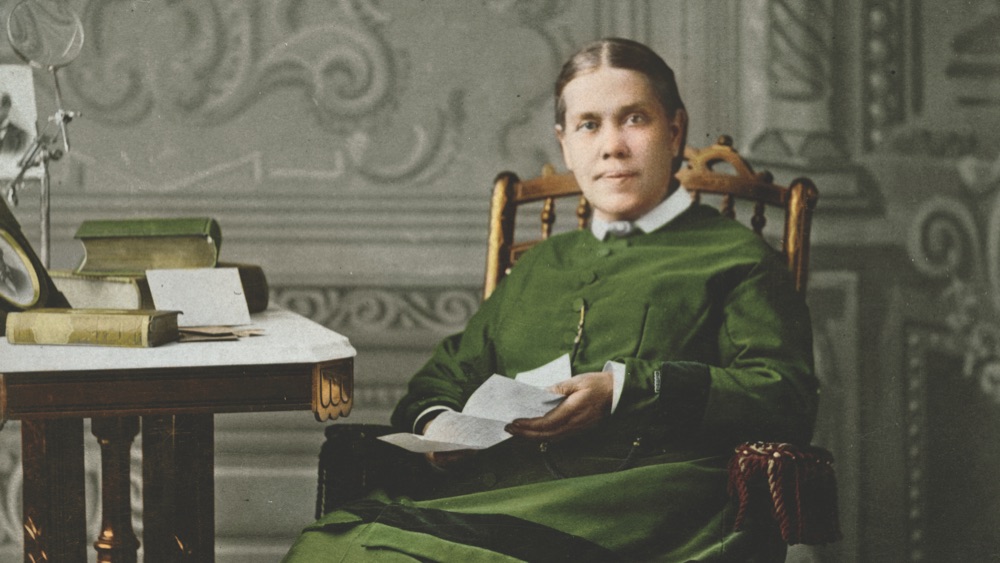Most students who applied this way of approaching Ellen White have testified that it revolutionized their perception of her as a person, her ministry, and her writings.

A few years ago I was discussing with a group of students the theme of God’s love in the writings of Ellen White (1827–1915). One student replied, “I was introduced to Ellen White through a group that was very law-oriented, and that makes it difficult for me to find the love of God there.”
In my experience most teenagers and young adults have experienced a rough introduction to Ellen White’s writings, where she has been used as an arbiter of pure doctrine, a judge of right interpretation, and a rule for lifestyle questions. It was not until they “tasted” her writings for themselves that their perception improved. This raises the question on how we should introduce people to the writings of this significant historical figure who was instrumental in the founding of the Seventh-day Adventist Church and still has bearing on the lives of many people today.
Where to Begin?
One might ask: “Ellen White wrote so much. Where should I begin?” Many of her contemporary readers knew her personally, had met her, or had read her frequent articles in Adventist periodicals. They were generally aware of the central motifs and recurrent topics in her talks and writings, allowing them to read her books against the backdrop of that knowledge.
No one today can claim the advantage of having known, met, or heard Ellen White personally. Without that experience, we are at a disadvantage to comprehend things she wrote specifically for people with this background. Thus the writings are often misunderstood and misused.
While we cannot have the firsthand experience with Ellen White that her contemporaries had, I believe we may approach her writings in a way that permits us to develop a similar perspective. This “method” is based on the reality that some of her writings were written specifically with an Adventist audience in mind, whereas other writings were written for a broad audience, both Adventist and non-Adventist.
While the latter set of writings did not require any knowledge about Ellen White as a person or her claim to divine inspiration, publications for an Adventist readership could expect at least a basic understanding of those points. I suggest starting with writings that do not require any background knowledge of Ellen White.
Writings for a Broad Audience
In this category there are writings on a number of topics, such as salvation, Jesus, the cosmic conflict, education, and health. Her central ideas become especially visible as we progress, allowing us to see how they permeate all her writings.
A nice starting point to her most important ideas is Steps to Christ, published originally in 1892 by the Evangelical publisher Fleming H. Revell. Written from a Wesleyan-Arminian perspective, this small, revivalist book presents a beautiful description of God’s character and provides practical steps on how to become and remain a Christian. The book explains many of the key themes and emphases of her ministry as a whole—love, authenticity, spirituality, commitment, growth, joy.
A passion for Jesus and Scripture drove her ministry and interaction with other people. A strong focus in her cosmic conflict narrative is Jesus as the ultimate manifestation of God’s unselfish, others-centered love. The Desire of Ages (1898), Thoughts From the Mount of Blessing (1896), and Christ’s Object Lessons (1900) deal with the person, life, teachings, and death of Jesus. The two latter books, covering the Sermon on the Mount and the parables, were originally intended to be part of The Desire of Ages, but as that book had grown too large, they were published separately.
Her other books on the cosmic conflict narrative—Patriarchs and Prophets (1890), Prophets and Kings (1917), The Acts of the Apostles (1911), and The Great Controversy (1888, 1911)—revolve around the character of God’s love. Using the words “God is love” as the first words in Patriarchs and Prophets and as the last words in The Great Controversy, she employed those words from 1 John 4:16 as the framework for the entire narrative.
In Education (1903), she stressed that “love, the basis of creation and of redemption, is the basis of true education.”1 Unselfish love to God and to other people underlies unselfish service and all true development.
This is facilitated best through the harmonious development of body, mind, and soul. Since true unselfish love necessitates freedom of will, “true education” aims at training “the youth to be thinkers, and not mere reflectors of other men’s thought.”2
Finally, the same motifs reappear in The Ministry of Healing (1905), a manual for unselfish ministry to those in physical, emotional, and spiritual need. This type of help illustrates the love of Jesus, becoming a “vitalizing power” that “touches with healing” “every vital part—the brain, the heart, the nerves.”3 The practical illustration of God’s love therefore becomes an important tool in reaching people in the context of the cosmic narrative.
Writings for a Limited Audience
Seeing her focus on God’s love as manifested in Christ and how that plays out in our individual lives prepares us as we turn to Ellen White’s writings for an Adventist audience. Since those writings often spoke to particular situations and circumstances, it is helpful to know the context in which they were written. The book Life Sketches (1915) provides a good overview of her life, family, experiences, visions, travels and more.
The Ellen G. White Letters and Manuscripts With Annotations, volume 1, 1845–1859, attempts to make her personal interaction and inspired counsel available against the backdrop of the historical context. That may also explain why her son W. C. White (18541937) expressed the need for the Testimonies for the Church (1855) to be published with historical background information.4
Ellen White published some writings for specific groups in the church, who presumably were aware of the main focus and emphases of her ministry. The Southern Work (1898, 1901), Gospel Workers (1892, 1915), and Counsels to Parents, Teachers, and Students (1913) fit into this category. Reading those writings from the perspective gained through the reading of her general audience works will prove beneficial.
After discovering Ellen White’s main emphases, learning about her as a person, and understanding the general nature of the testimonies, we are better prepared to turn to the posthumous compilations of her writings, such as Counsels on Diet and Foods (1938), Evangelism (1946), Temperance (1949), The Adventist Home (1952), and many others.
Many of Ellen White’s statements quoted in the compilations were originally made to address specific circumstances. This should always be kept in mind. Sometimes she gave what appeared to be conflicting counsel to different people, but, she may have been applying different biblical principles depending on the circumstances and issues.
Most students who applied this way of approaching Ellen White have testified that it revolutionized their perception of her as a person, her ministry, and her writings. Not only does it create a more balanced perspective, but it allows them to appreciate the content of those writings in harmony with their original intent and purpose.
1 Ellen G. White, Education (Mountain View, Calif.: Pacific Press Pub. Assn., 1903), p. 16.
2 Ibid., p. 17.
3 Ellen G. White, The Ministry of Healing (Mountain View, Calif.: Pacific Press Pub. Assn., 1905), p. 115.
4 W. C. White to Guy Dail, Aug. 28, 1929.








